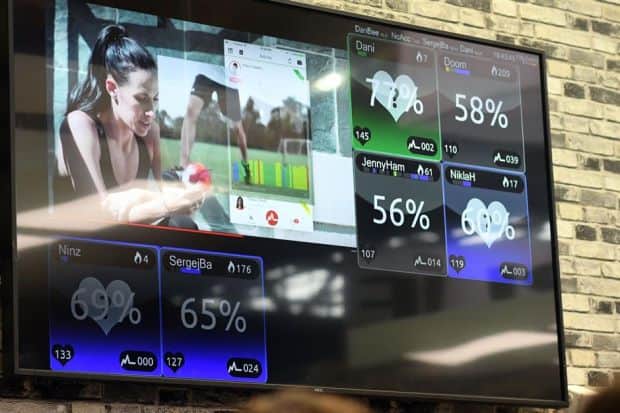
It all started with the Fitbit. These days, everyone seems to be measuring how many steps they are taking, counting calories with an app or measuring their pulse with a device around their wrist.
Some fitness clubs even offer classes where participants can see their measurements – such as heart rate and calorie consumption – on a big screen, next to those of their classmates.
But is this obsession with fitness data actually helping us to improve our health?
“People are online everywhere, all the time, connected to the world. We believe that’s what they want when they’re engaged in fitness activities too,” says Jason Worthy, vice president of digital solutions at US-based Life Fitness, a maker of commercial fitness equipment.
For Worthy, the advantages are obvious. Fitness is a personal matter, he says. His wife likes to be distracted when she’s working out, but he’s hungry for the data. “I want to know how fast I was, and whether I was faster than the last time.”
There’s nothing wrong with using modern digital technology for motivation, says Ingo Froboese, a German sports professor. But he says it’s important for a fitness instructor to evaluate the data and, for example, adapt the person’s workout routine accordingly.
The key role of the fitness instructor is also underscored by Christina Gregori, who trains instructors for US-based bicycle maker Schwinn.
Among the company’s products are digital exercise bikes with wireless connectivity to fitness trackers worn on the wrist. During classes, the workout data is then displayed on a large monitor. “[Participants] can pedal against each other or all aim for the same target,” she says.
Competing against others in this way “is what people want”, Gregori points out, adding that it’s important for the instructor not to get too carried away.
Performance monitoring also carries data security risks. The more data is collected on you, the greater the risk.
Joanna Schmoelz, deputy director of the German Institute for Trust and Security on the Internet (DIVSI), recommends reading the terms and conditions of any companies you’re considering trusting with your health or fitness data.
Health club members are advised to find out whether their data is stored anonymously or under their names. And who has access to the data? Practices vary depending on the club.
Benjamin Krause, product manager for US-based Matrix Fitness, emphasises that data collected by Matrix equipment legally belongs to the respective athletes, not the club or equipment maker.
It’s different with the Swiss company Bodygee, known for its mobile 3D body scanner.
“The personal trainer creates a high-resolution 3D image of your body at regular intervals with our scanner,” explains Bodygee’s Jens Stimpel. The athlete can view the changes in body dimensions on their smartphone. The data, Stimpel says, belongs to the health club.
And that means more than just a few numbers. “The 3D scan collects reams of data,” she says. “You can get a picture of someone in the truest sense of the word with body scan images.”
Froboese, too, thinks techniques of this kind make athletes “naked”, as it were. In his view, recreational athletes don’t need such gadgets. To see the results of their workouts, he says, all they have to do is look in the mirror.
























